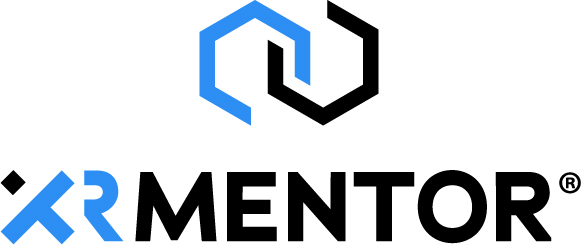Key Points
In this blog, we explore how integrating the best AI platform with Augmented Reality (AR) transforms technician training by delivering personalized, efficient, and data-driven solutions. The primary benefits of leveraging AI + AR software for training is:
- Automated Content Generation: AI updates AR training modules in real-time, ensuring technicians learn the latest industry skills and technologies.
- Personalized Learning: AI adapts training to individual technician needs, focusing on areas for improvement and providing tailored resources for mastery.
- Real-Time Feedback: AI monitors technician performance during AR sessions, offering instant corrective feedback to speed up skill development.
- Predictive Maintenance: AI analyzes data to forecast equipment failures, allowing technicians to perform preventive maintenance and reduce downtime.
- Enhanced Engagement: Gamification and AI-driven challenges keep technicians motivated, increasing learning retention through interactive, rewarding experiences.
AR training systems are revolutionizing how auto and heavy-duty technicians acquire and hone their skills. By integrating the best AI platform into these systems, training can become even more personalized, efficient, and engaging, ultimately leading to better-prepared technicians.

Automated Content Generation
The best AI platform can automatically generate content for AR training systems, ensuring that the training material is always up-to-date and relevant. By analyzing industry trends, new technologies, and common repair issues, AI creates new training modules addressing the latest developments in the field. This guarantees that technicians are learning the most current and applicable skills.
In addition, AI can generate interactive 3D models, simulations, and step-by-step guides tailored to specific training needs. For example, if a new type of engine is introduced, the AI quickly develops a comprehensive training module, complete with detailed visualizations and interactive elements. This
Personalized Learning Experiences
The best AI platform analyzes individual learning patterns, adapting the training content to meet each technician’s specific needs. For instance, if a technician struggles with diagnosing electrical issues, the AI adjusts the AR training modules to provide more focused practice in that area. This personalized approach ensures technicians receive targeted training to improve their skills effectively.
Furthermore, AI tracks a technician’s progress over time, identifying strengths and weaknesses. This enables a dynamic learning path that evolves with the technician’s development, ensuring continuous improvement. Additionally, AI can recommend supplementary resources, such as videos or articles, to address specific knowledge gaps.
Real-Time Feedback and Assessment
During AR training sessions, the best AI platform monitors the technician’s actions and provides instant feedback. For example, when a technician practices engine diagnostics, the AI detects errors in real-time and offers corrective suggestions. This immediate feedback helps technicians quickly learn from mistakes, reducing the time needed to master complex procedures.
Moreover, AI provides detailed performance analytics, highlighting areas of strength and where improvement is needed. This data-driven approach allows trainers to tailor their instruction to each technician’s needs, creating a more effective learning environment. Real-time feedback also boosts technicians’ confidence as they track their progress and see the impact of their efforts.
Enhanced Data Analytics
The best AI platform processes and analyzes the vast amounts of data generated during AR training sessions, including task completion times, common errors, and performance trends. Trainers can use these insights to identify where technicians need additional support and refine training programs to address common challenges.
AI-driven analytics can also predict future training needs based on historical data. For example, if a particular type of repair becomes more common, the training program can shift its focus accordingly. Additionally, AI benchmarks performance against industry standards, helping organizations ensure their technicians meet or exceed expectations.
Intelligent Virtual Assistants
AI-powered virtual assistants guide technicians through complex repair procedures, answer questions, and provide additional information. These assistants simulate real-life scenarios, such as troubleshooting a malfunctioning transmission, allowing technicians to practice in a safe environment. This hands-on experience is invaluable for building confidence and competence.
Available 24/7, virtual assistants provide on-demand support, ensuring learning can happen whenever technicians face challenges. Over time, the AI learns from interactions, becoming more effective at delivering relevant and accurate information.
Predictive Maintenance and Troubleshooting
The best AI platform can predict potential equipment failures and suggest preventive maintenance actions. By analyzing data from vehicle sensors, AI identifies patterns indicating an impending failure. Technicians can use this information to perform maintenance before a breakdown occurs, improving vehicle reliability and reducing downtime.
AI also integrates with AR systems, offering visual overlays that guide technicians through maintenance tasks. This combination of predictive analytics and AR ensures technicians perform maintenance accurately and efficiently. Furthermore, AI tracks the effectiveness of maintenance actions, refining the process with every step.
Gamification and Engagement
The best AI platform enhances AR training gamification by creating adaptive challenges and rewards based on technician performance. For example, technicians can earn points or badges for completing tasks correctly and efficiently, fostering motivation and engagement.
Additionally, AI can introduce competitive elements like leaderboards, encouraging a sense of community and friendly competition among technicians. Personalizing gamification elements ensures the training remains challenging yet achievable for each individual.
Conclusion
Integrating the best AI platform into AR training systems for auto and heavy-duty technicians brings numerous benefits, from personalized learning experiences to real-time feedback and enhanced data analytics. By leveraging AI, training programs can become more effective and engaging, better preparing technicians for the challenges they will face in the field. As technology evolves, the synergy between AI and AR will lead to even more innovative and impactful training solutions in the automotive and heavy-duty industries.

